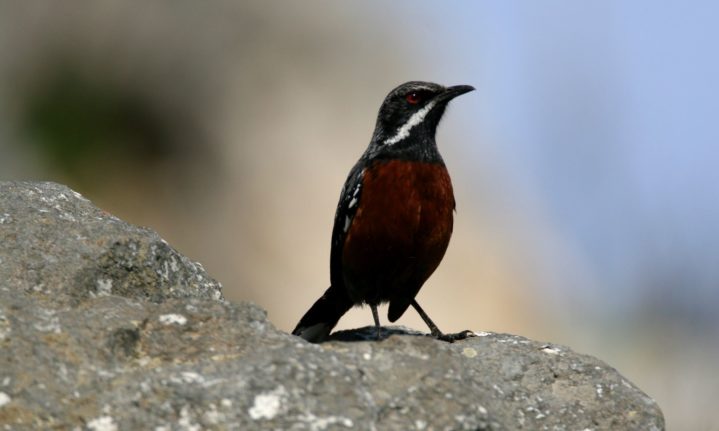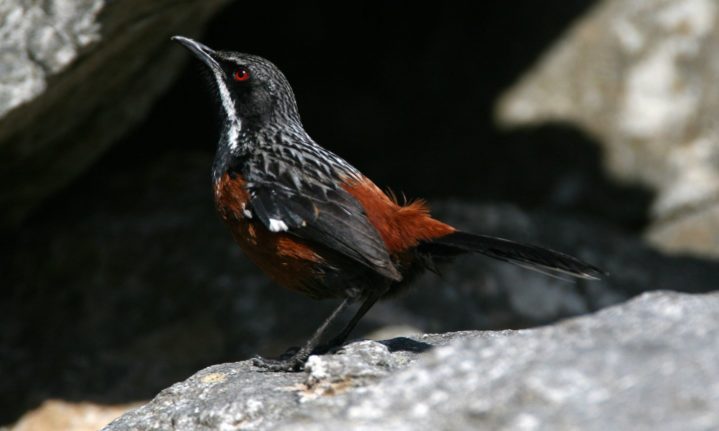Endemic to the mountain fynbos region of the Cape, this unique bird has been named Birdlife South Africa’s bird of the year. The choice may seem arbitrary, but it couldn’t have been more pertinent.

Picture: Andrew de Blocq/ Birdlife South Africa
The Bird of the Year is very much a conservation initiative to raise awareness about species in trouble, and it’s about time to talk about the Cape rockjumper.
It is a sedentary bird, meaning that it does not migrate and mountainous fynbos is its permanent home. A rather striking bird, spotting them is highly valued by birders because of their rarity, their gregarious personality and fascinating social interactions.
They are monogamous, cooperative breeders found in groups of 2-5 with a single breeding pair. The breeding pair is assisted by the previous years offspring, making their social interactions entertaining for birders.
The Cape rockjumper is one of only two species of rockjumper, both of which are only found in South Africa. The environment this bird calls home is one of the most endangered ecosystems in the world, the fynbos biome.
What’s all the fuss?

Picture: Blake Matheson/ Flickr Commoms
It’s already been established that fynbos is one of the most threatened ecosystems in the world. With the second-highest rate of extinctions globally, the biome is being relegated to a few last remaining strongholds with urban and agricultural expansion.
The story of the Cape rockjumper is part of an even larger one. Already situated in one of the most endangered ecosystems in the world, the global average temperature is also increasing.
The cumulative effects of this cannot be overstated, where South Africa’s temperatures are predicted to rise at double the global average and our bird of the year is especially vulnerable to rising temperatures.
Birdlife South Africa regards this species to be at risk because of rising temperatures, listing a number of factors that contribute to its precarcity. They pant to cool themselves down and have to forage in the heat for food, exhausting them.
The increased temperatures mean snakes are more active, their main predator. They are particularly vulnerable to ground predators such as mongoose and boomslang. For example, a study in the 2017 breeding found only one survived out of 20 nests, a dismal 5 % breeding success rate. The video below showcases a boomslang attacking a rockjumper nest.
Their decreasing numbers are telling, with previous estimates placing their population at around 90 000, in 2018 it was estimated that their population was between 30 000 and 60 000.
One factor being discussed for their declining population has to do with ‘sky islands’ – individual mountain ranges where Cape rockjumper populations are separated by inhospitable valleys of semi-desert karoo.
These valleys are getting wider due to warming temperatures and Fynbos retreating to the higher mountain slopes. Scientists are saying that the Cape rockjumper’s habitat may decrease by 62% by 2085.
Saving the Cape Rockjumper

The Cape rockjumper distribution. Picture: Birdlife South Africa.
With temperatures predicting to rise, an easy way to help the rockjumper would be to reduce carbon emissions globally to fight climate change. But if only things were that simple.
The rockjumper is one of the species predicted to be adversely affected by climate change, so to help mitigate the damage, one option is the creation of fynbos corridors between ‘sky islands’ so populations can migrate between each other.
ALSO READ,
Kruger birding for beginners: 10 common birds you should know



















